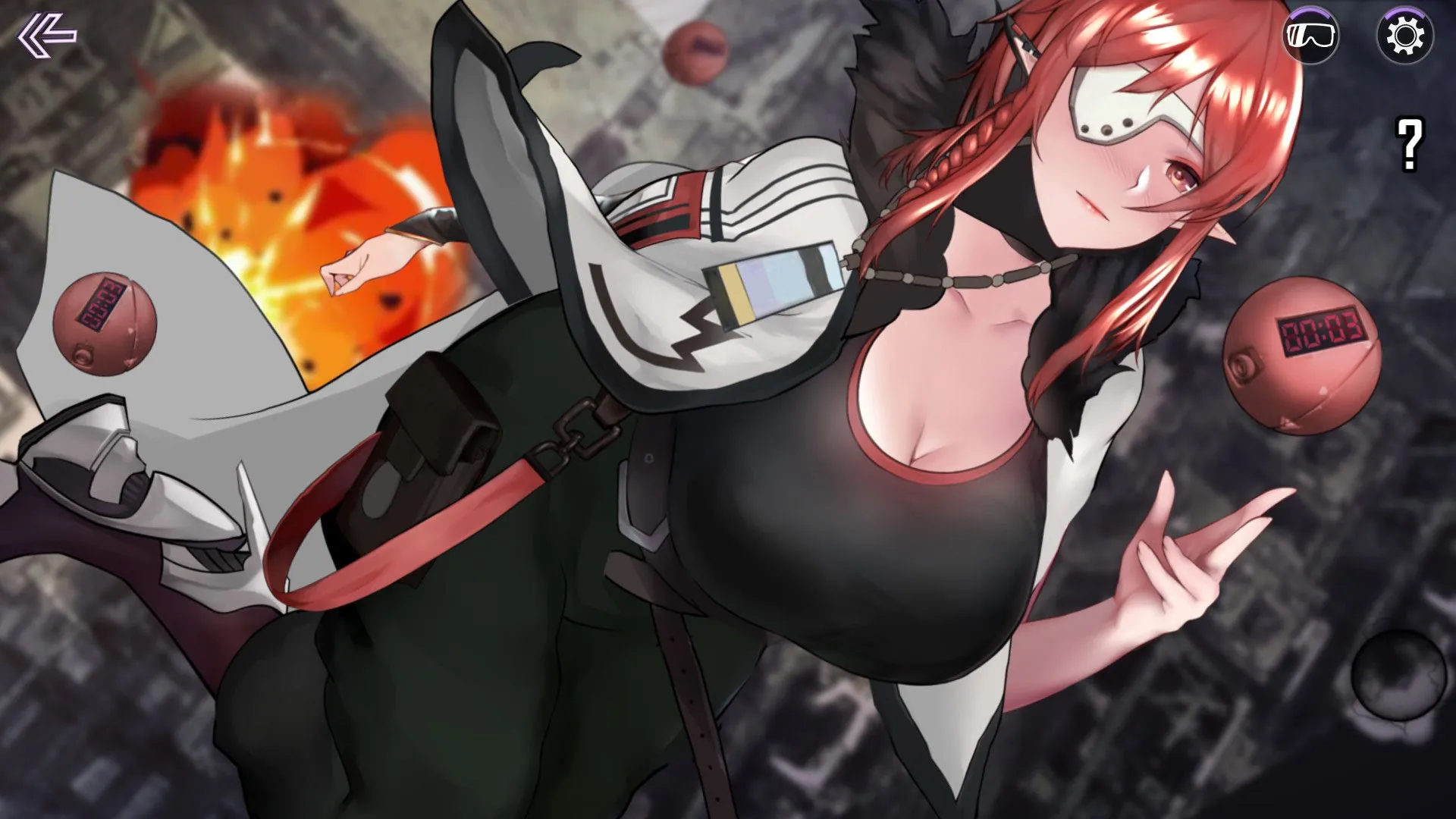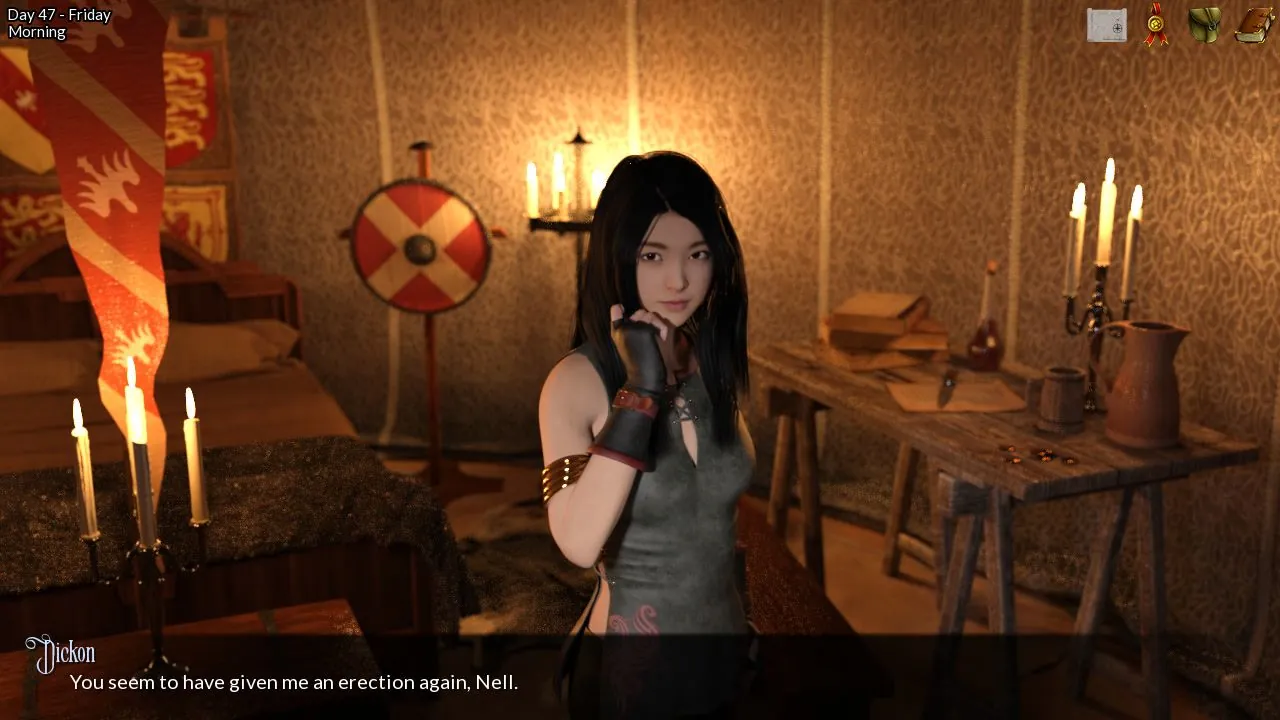
Strangers on Paper
Play Strangers on Paper
Strangers on Paper review
Explore how meaningful decisions shape your narrative in this acclaimed visual novel
Strangers on Paper stands out as a narrative-driven visual novel that prioritizes meaningful player agency over linear storytelling. Developed by Gloomy Ghost, this episodic adventure invites you into a bar setting where your role as a writer searching for inspiration becomes the catalyst for reconnecting with past acquaintances and uncovering hidden depths within seemingly familiar faces. Unlike traditional visual novels where dialogue choices feel superficial, this game treats every decision as consequential, creating unique storylines that reflect your personal approach to complex human situations. Whether you’re navigating relationship dynamics, confronting personal struggles, or helping characters through their own crises, your choices ripple throughout the narrative in ways that demand genuine emotional investment.
Understanding the Core Narrative and Setting
Have you ever walked into a bar and felt like you were stepping into a different world? A place where the outside noise fades and real conversations begin? 🍸 That’s the exact feeling Strangers on Paper captures from the moment you hit ‘start’. This isn’t just a backdrop; it’s the very soul of the experience. As a writer who’s spent more than a few late nights in similar havens, I can tell you the setting is a character in itself. It’s where you, a blocked writer, will find your story—and maybe even a piece of yourself.
This Strangers on Paper visual novel masterfully uses its environment to pull you into its character-driven story. The bar isn’t just a location; it’s a sanctuary, a confessional, and a stage, all rolled into one. Let’s pull up a stool and dive into the foundational elements that make this interactive storytelling game so profoundly compelling.
The Bar as Your Creative Sanctuary
Imagine this: you’re stuck. The cursor blinks mockingly on a blank page, and the words just won’t come. We’ve all been there. 😥 In Strangers on Paper, this isn’t just a minor plot point—it’s the entire reason you find yourself in a dimly lit, cozy bar. This setting is your escape from creative paralysis, and the game designers have woven its significance into the very fabric of the narrative-driven gameplay.
The bar is deliberately designed to feel like a safe space. The low lighting, the soft hum of conversation, the clinking of glasses—it all creates an atmosphere where defenses can come down. 🛋️ From my first playthrough, I was struck by how the environment directly influences the mood. You’re not just clicking through dialogue; you’re inhabiting a space that encourages intimacy and revelation. This is where the branching dialogue system truly comes to life, as the relaxed setting makes characters more likely to open up and share their hidden layers.
Pro Tip: Pay close attention to the bar’s ambient details. The music, the time of night, and even what you choose to drink can subtly influence the tone of your conversations and the player choice consequences that follow.
This isn’t a loud, chaotic nightclub. It’s a quiet refuge where the pace is slow, and the focus is on connection. The game uses this to its full advantage, making every interaction feel intentional and significant. The bar becomes your writer’s notebook, a place where you gather the raw, emotional material that will—hopefully—unclog your creativity and help you finish your book.
Meeting Characters with Hidden Depths
The magic of this interactive storytelling game truly ignites when the characters walk in. And what a cast it is. The core premise—that the people you meet are not random strangers but figures from your past with untold stories—is pure genius. It immediately creates a foundation of shared history and unspoken tension. 🤝
Let’s meet the two central Strangers on Paper characters who will shape your journey.
First, there’s Becca—your best friend’s sister and a past crush who has just returned to town. 😳 Seeing her walk into the bar is a jolt. You have a history, but it’s a fragmented one, filled with the awkwardness of youth and the weight of time passed. The game doesn’t hand you her entire backstory on a platter. Instead, through the brilliant branching dialogue system, you slowly piece together why she left, what she’s running from now, and who she has become. Your choices in these conversations directly impact whether you rekindle an old flame or help a old friend find solid ground.
Then, there’s Amy. On the surface, she’s the popular girl from high school who seems to have it all—the picture-perfect life. 🏡 But as you talk to her in the neutral territory of the bar, that perfect facade begins to crack. The game expertly uses your interactions to reveal her internal struggles, showing you the stark contrast between her public image and her private reality. Your dialogue choices here are critical; you can choose to be the person who sees past the Instagram-perfect surface and offers genuine support.
The beauty of these characters lies in their complexity. They are not archetypes; they are people, beautifully rendered with flaws, fears, and aspirations. Your role is to navigate these rediscovered relationships, and every decision you make weaves a new thread into the tapestry of your shared narrative.
To help you keep track of the intricate paths you can take, here’s a breakdown of these compelling characters:
| Character | Core Conflict | Key Branching Moment | Potential Story Outcomes |
|---|---|---|---|
| Becca | Returning to a past she ran from, dealing with unresolved feelings and a need for stability. | How you address a moment of her emotional vulnerability—with distance or with closeness. | Reigniting a romantic connection, establishing a deep, platonic friendship, or a painful parting of ways. |
| Amy | Maintaining a perfect public image while internally grappling with immense pressure and personal demons. | Your reaction when she first reveals a crack in her “perfect” facade—do you pry or offer gentle support? | Becoming her trusted confidant, helping her seek professional help, or enabling her denial and worsening her situation. |
😮 Seeing their journeys laid out like this really highlights the weight of your choices, doesn’t it? The player choice consequences in this Strangers on Paper visual novel are not about “good” or “bad” endings, but about authentic, often messy, human outcomes.
How Your Writer’s Block Becomes the Story
Here’s the most innovative part of this character-driven story: your protagonist’s creative block isn’t just a plot device; it’s the engine of the entire game. 🚂 The pressure you feel to write your book mirrors the pressure you feel to say the right thing to Becca and Amy. Every conversation is potential material, and every meaningful connection is a potential breakthrough.
I remember in one of my playthroughs, I was so focused on “gathering material” for my book that I chose dialogue options that were probing and analytical. The result? Becca shut down, accusing me of just seeing her as a story. It was a gut punch. 💔 The game had reflected my own insincerity right back at me. This is the core of its narrative-driven gameplay—your internal struggle as a writer is constantly reflected in your external interactions.
The branching dialogue system is your primary tool for navigating this. The choices presented to you often reflect a writer’s mindset:
* Will you observe from a distance, or immerse yourself in the moment?
* Will you ask the safe, polite question, or the risky, meaningful one?
* Will you treat this conversation as research, or as a genuine human connection?
Your answers don’t just affect your relationships; they directly influence your character’s ability to overcome their block. Finding authentic connection becomes the key to unlocking creativity. It’s a powerful message that resonates deeply with anyone who has ever created anything.
Furthermore, the game bravely explores mature themes like anxiety, depression, and the pressures that lead to unhealthy coping mechanisms. 👁️ Your writer’s perspective gives you a unique lens through which to approach these topics—sometimes with empathy, other times with a clumsy curiosity. The player choice consequences here are significant, teaching you that listening and offering non-judgmental support can be more powerful than any clever piece of dialogue you could ever write.
In the end, Strangers on Paper is more than a game about writing a book. It’s about listening to the stories people are living all around you. The bar setting provides the perfect, intimate stage for these dramas to unfold. The Strangers on Paper characters you meet challenge you to look beyond first impressions. And your own creative struggle becomes the very thing that teaches you how to be human. It’s a masterclass in interactive storytelling, proving that the most important stories aren’t the ones we write, but the ones we live and share with others. ✍️❤️
Strangers on Paper represents a thoughtful approach to interactive storytelling, where your decisions genuinely shape the narrative experience rather than serving as cosmetic variations. By combining meaningful choice systems with authentic character development and thematic depth, the game creates an engaging experience that rewards emotional investment and encourages multiple playthroughs. Whether you’re drawn to the complex relationship dynamics, the exploration of personal struggles, or the satisfaction of seeing your choices create tangible story consequences, Strangers on Paper delivers a narrative experience that respects player agency while maintaining artistic integrity. The game’s availability across multiple platforms and its ongoing development ensure that new chapters will continue expanding this richly detailed world. If you appreciate visual novels that prioritize storytelling substance over superficial mechanics, Strangers on Paper deserves a place in your gaming library.













